#ancient frescoes
Photo


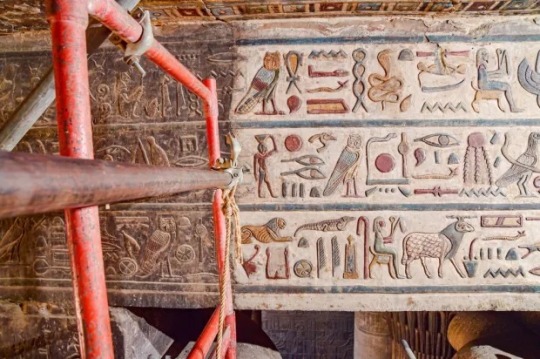




Incredible Colorful Ceiling Frescoes Discovered In Ancient Egyptian Temple
Two millennia's worth of soot and dirt covered the ceiling frescoes in the temple of Khnum in the Egyptian city of Esna, protecting the colors underneath. Now, painstaking restoration work from archeologists has brought these incredible pieces of art back to life.
The frescoes have 46 images of vultures, representing, in turn, the Upper-Egyptian vulture goddess Nekhbet and the Lower-Egyptian serpent goddess Wadjet, who is also depicted as a vulture with open wings, although keeping the head of a cobra and the crown of Lower Egypt. Nekhbet is wearing the Upper Egypt crown.
The restoration was conducted by the Institute for Ancient Near Eastern Studies at the University of Tübingen and the Egyptian Ministry of Tourism and Antiquities. They have been working since 2018 to bring the colors of the frescoes back into view.
“Temples and ancient depictions of the gods were often painted in brilliant colors, but these have usually faded or even disappeared totally as a result of external influences,” Professor Christian Leitz from the University of Tübingen, said in a statement.
The temple was dedicated to one of the earliest Egyptian deities, Khnum the ram-headed god who was seen as the god of the source of the Nile. At Esna, Khnum and his consort Neith are treated as the creator deities.
Construction of the religious building had begun during Ptolemaic time but most of the remaining parts are from the Roman era, probably around the time of Emperor Claudius (41-54 CE). The temple began to attract the interest of archeologists in Napoleonic times, but it was in the latter part of the last century that a more detailed study of it began in earnest.
“From the 1950s, the French Egyptologist Serge Sauneron systematically documented the Temple of Khnum at Esna and the paintings that were visible at that time,” said Tübingen scientist Dr. Daniel von Recklinghausen, “The temple’s complete range of images is unique in its wealth of figures and the state of preservation of the colors.”
“For the first time we can see all the decorative elements in relation to one another,” said Leitz. “This was impossible simply with Sauneron’s publication.”
The whole restoration was funded by the American Research Center in Egypt, the Ancient Egypt Foundation, and the Gerda Henkel Foundation. The team is now planning to translate all of the Esna inscriptions, as well as study the connection between all the images and writing in the temple. This upcoming work has been funded by the German research foundation.
#Incredible Colorful Ceiling Frescoes Discovered In Ancient Egyptian Temple#the temple of Khnum in Esna Egypt#archeology#archeol#ancient frescoes#ancient art#egyptian art#art#artist#art work#art news#history#history news#ancient history#ancient culture#ancient civilizations#ancient egypt#egyptian history#egyptian gods
126 notes
·
View notes
Text
This is a great use for AI.
7 notes
·
View notes
Text

Embark on a journey through the cultural tapestry of Sigiriya, Sri Lanka, as we present the 15 Best Things to Do in Sigiriya. From ascending the iconic Sigiriya Rock to exploring ancient frescoes, this guide illuminates the treasures awaiting intrepid travellers. Discover the secrets of this UNESCO World Heritage Site, from vibrant markets to tranquil gardens. Immerse yourself in Sigiriya's rich history, savour local flavours, and embrace unforgettable moments. Your adventure begins with our curated list, unveiling the essence of Sigiriya's allure.
#Sigiriya Sri Lanka#Things to Do#Sigiriya Rock#UNESCO World Heritage Site#Ancient Frescoes#Cultural Tapestry#Vibrant Markets#Tranquil Gardens
0 notes
Text
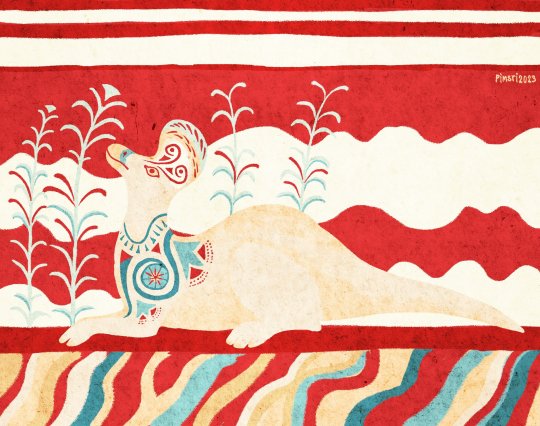

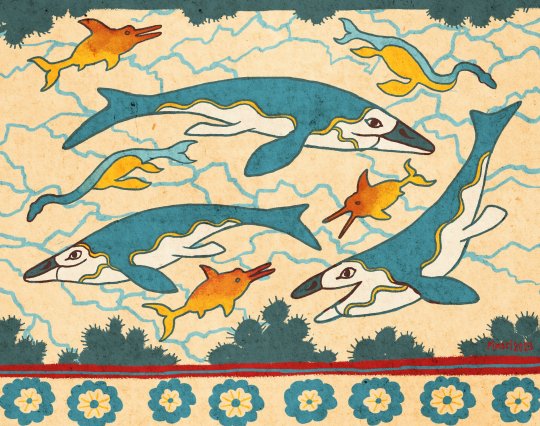
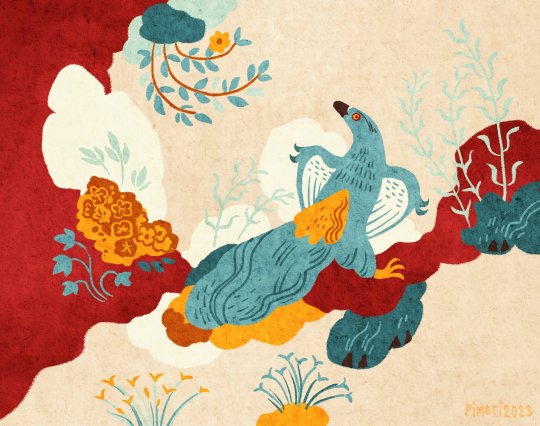
Paleo art inspired by Minoan frescoes
#pimsriart#pimsriart2023#paleoart#paleo art#paleontology#dinosaur#marine reptile#animal#minoan#minoan frescoes#frescoes#art history#ancient greece#triceratops#lambeosaurus#microraptor#mosasaurid
14K notes
·
View notes
Text
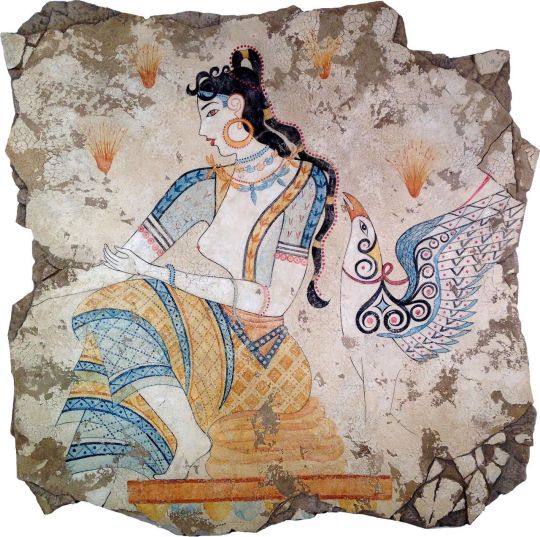
The Saffron Goddess (1600 B.C.) is a detail from a Minoan fresco depicting a saffron harvest, Akrotiri, Santorini island, Greece
8K notes
·
View notes
Text
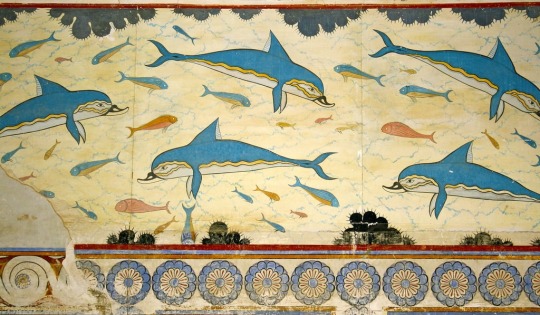

Dolphins Fresco, Palace of Knossos (& detail)
c. 1700-1450 B.C.
#knossos#fresco#dolphins#ancient art#antiquities#minoan civilization#minoan art#minoan#beautiful animals#nature#wildlife#beautiful dolphin#aesthetic#beauty#animals in art#art history#aesthetictumblr#ancient history#ancient world#tumblraesthetic#tumblrpic#tumblrpictures#tumblr art#tumblrstyle#artists on tumblr
2K notes
·
View notes
Text

Medallion painting of Venus Aphrodite with a golden diadem and scepter, pearl earrings and necklace, House of Marcus Fabius Rufus, Pompeii. 1st century BC
2K notes
·
View notes
Text

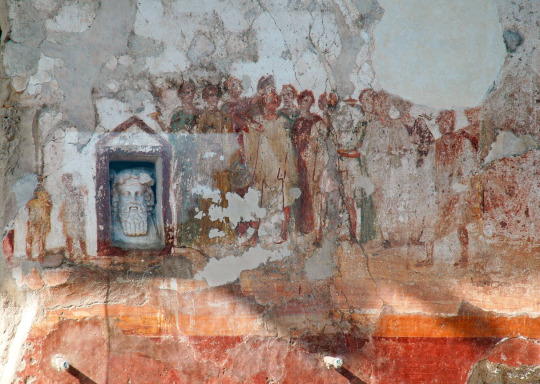
Fresco with a religious procession.
1K notes
·
View notes
Text
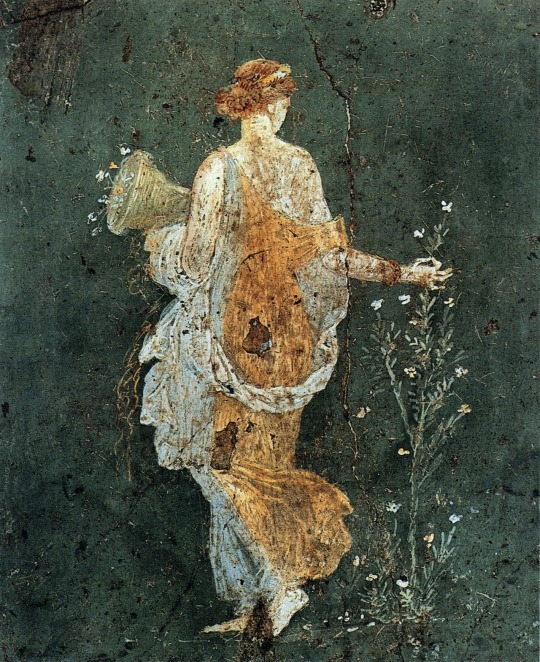
#maiden#roman#flowers#flora#spring#primavera#fresco#ancient rome#antiquity#archaeology#art#history#europe#european#villa of varano#stabiae#pompeii#naples#italy#southern italy#frescoes#woman#ancient#romans#villa#vases#vase
5K notes
·
View notes
Text
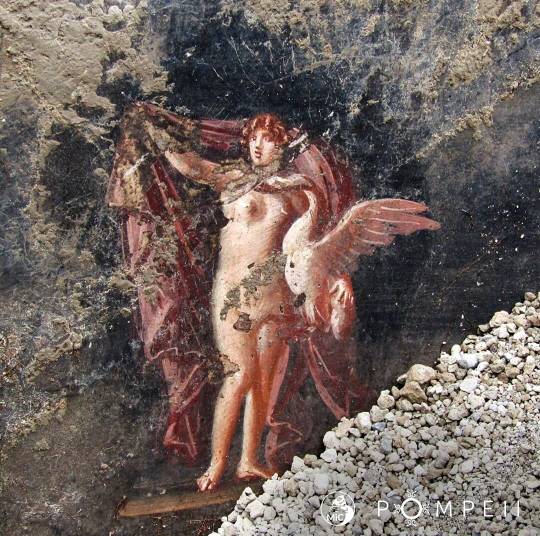

Another frescoes recently found in Pompeii, extraordinarily preserved on the wall of a triclinium (dining room).
Photos: Pompeii-Parco Archeologico
561 notes
·
View notes
Text

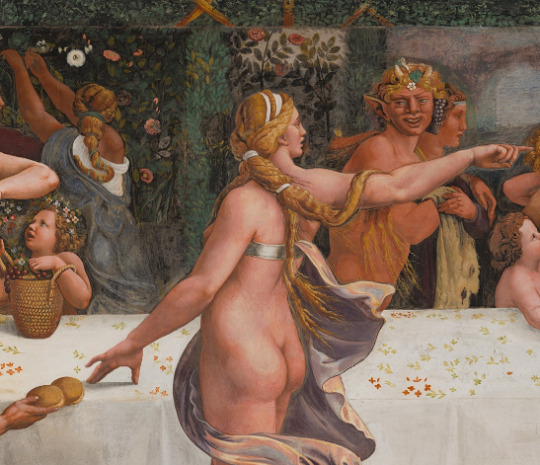

Details from the room of Cupid and Psyche in Palazzo Te, Giulio Romano, 1526-28
#art history#art#italian art#aesthethic#greek mythology#ancient greece#roman mythology#giulio romano#frescoes#palazzo te#mantua#mantova#cupid#psyche#cupid and psyche#zeus#olympias#banquet#bacchanalia#faun#16th century#rinascimento
469 notes
·
View notes
Text
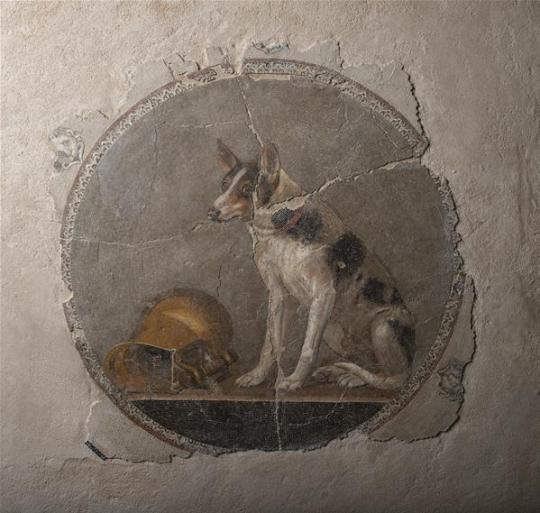
Floor fresco of a dog and an overturned vessel. Alexandria, 2nd century BCE.
EDIT: It's a mosaic.
#ancient history#fresco#ancient alexandria#ptolemaic egypt#ptolemaic period#poor doggo#he knows he did something wrong
744 notes
·
View notes
Text
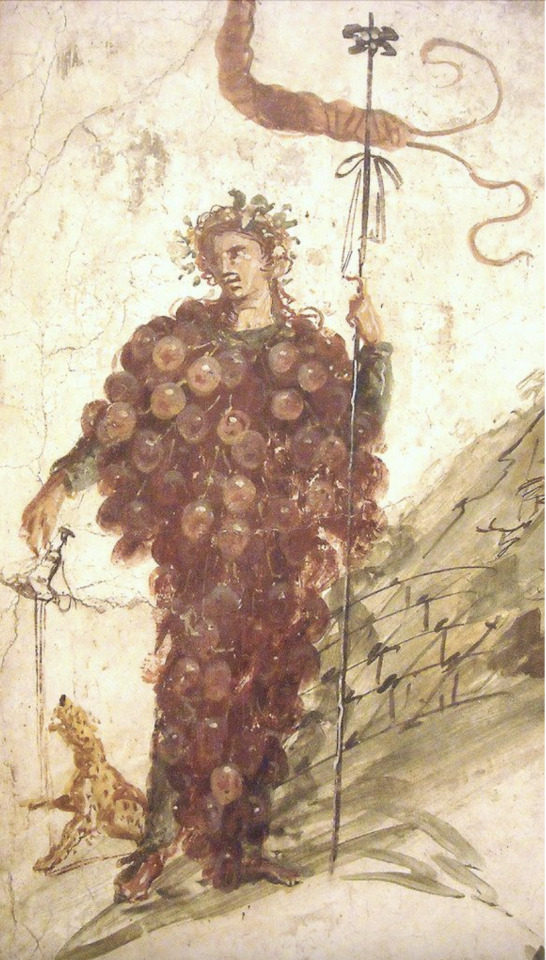
Dionysus as grapes, detail from fresco of Dionysus on Vesuvius, Pompeii, before 79 A.D. Museo Archeologico Nazionale, Naples
#how does it feel to be the coolest person ever#me two bottles of white wine deep#tagamemnon#queueusque tandem abutere catilina patientia nostra#ancient rome#ancient art#archaeology#frescoes#fresco painting
573 notes
·
View notes
Text

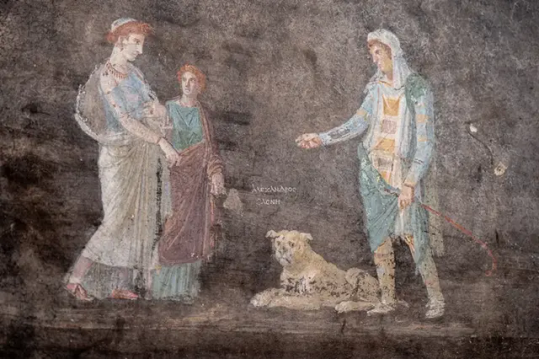
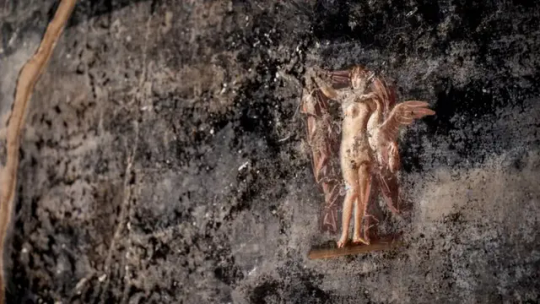
Breathtaking New Frescoes Found at Pompeii
Stunning Roman frescoes have been uncovered by archeologists in Pompeii, the ancient city destroyed by an eruption of the volcano Mount Vesuvius in the year 79 AD. Experts say the newly discovered frescoes are among the finest ever to emerge at the renowned archeological site.
The works of art line the high walls of what was once a large banquet hall. The walls themselves were painted mostly black, and the figures on the frescoes appear to emerge from the shadows. Site director Dr. Gabriel Zuchtriegel told CBS News partner network BBC News that the dark color was likely used to hide stains from the lamps that lit the hall after the sun went down.
"In the shimmering light, the paintings would have almost come to life," Zuchtriegel said.
Two pieces dominate the hall; one depicts the Greek god Apollo trying to seduce the priestess Cassandra. The second piece shows Prince Paris meeting Helen of Troy.


About a third of the "lost city" of Pompeii remains obscured by volcanic debris from the eruption almost two millennia ago. As scientists make new finds, they quickly move them to a storeroom to protect them from the elements.
The newly discovered frescoes, however, cannot be moved, so they have been protected with temporary roofing. Plaster glue is also being injected into the walls behind the artwork to stop them from falling down.
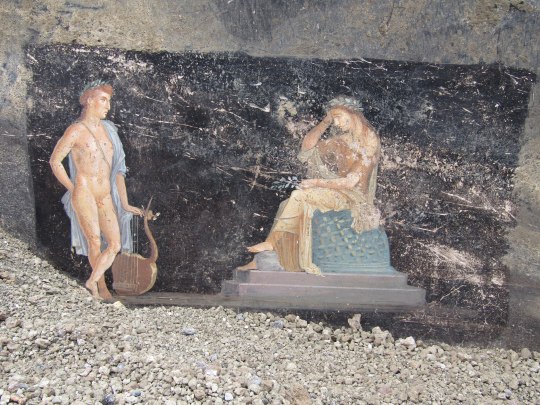
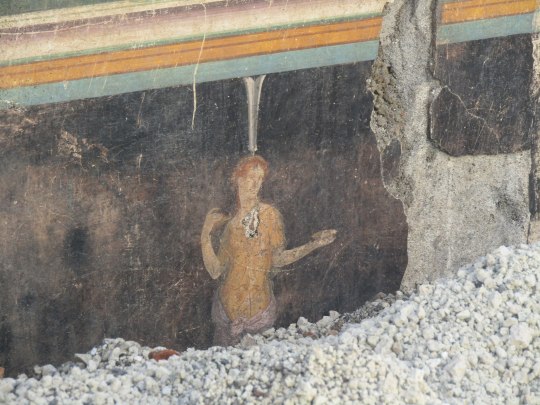

"We have a passion and a deep love for what we're doing, because what we're uncovering and protecting is for the joy also of the generations that come after us," chief restorer Dr. Roberta Prisco told the BBC, adding that the work was very stressful.
The dig site is much bigger than just the banquet hall.
Another fresco recovered from what was once one of Pompeii's grand properties had been on a ceiling, but it was smashed by the eruption that destroyed the city. Archeologists were able to lay out the pieces like a puzzle and recreate landscapes, theatrical masks, and Egyptian characters.


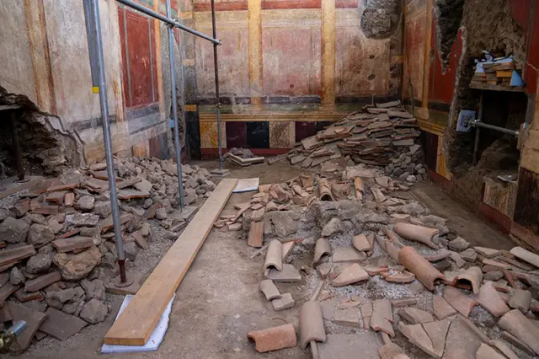
"This is my favorite discovery in this excavation because it is complex and rare," Dr. Alessandro Russo, co-lead archeologist on the dig, told the BBC. "It is high-quality, for a high-status individual."
In a bakery next to the grand property, the skeletons of two adults and a child were discovered.
Archeologists believe they may have been slaves who were trapped and couldn't flee the eruption, and were killed by falling stones.
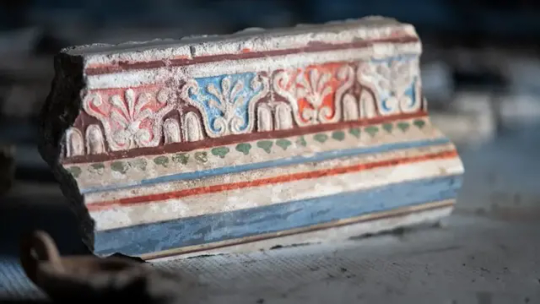
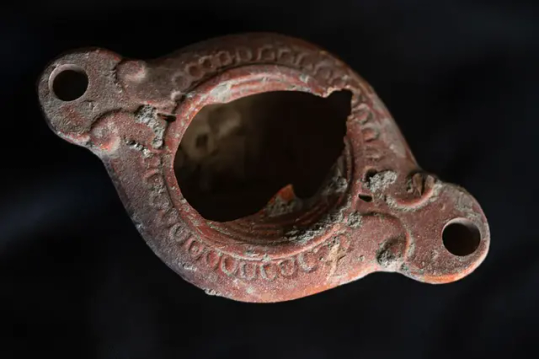
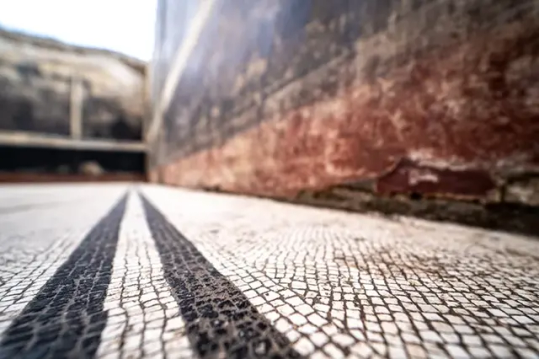
"When we excavate, we wonder what we're looking at," co-lead archeologist Dr. Gennaro Iovino told the BBC. "Much like a theater stage, you have the scenery, the backdrop, and the culprit, which is Mount Vesuvius. The archeologist has to be good at filling in the gaps — telling the story of the missing cast, the families and children, the people who are not there anymore."
The team's discovery was just one of a number of recent revelations from the site, after they found other mythological-themed frescoes in early March and then, just weeks later, a construction site that was being worked on right up until the eruption.
The archeologists said near the end of March that they'd found a home construction project that was frozen in time by the eruption, with materials such as bricks and tools still piled up in the reception area of the home.
By Haley Ott.

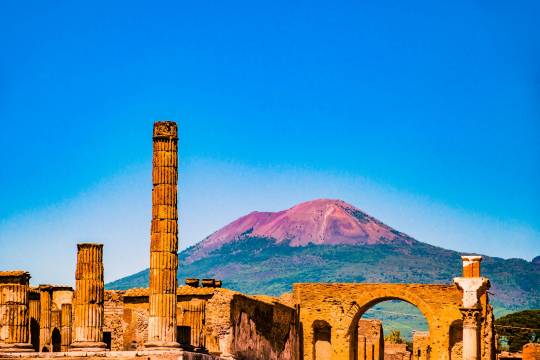

#Breathtaking New Frescoes Found at Pompeii#Roman frescoes#Mount Vesuvius#ancient artifacts#archeology#archeolgst#history#history news#ancient history#ancient culture#ancient civilizations#roman history#roman empire#roman art
310 notes
·
View notes
Text
villa of livia's garden room fresco, from palazzo massimo

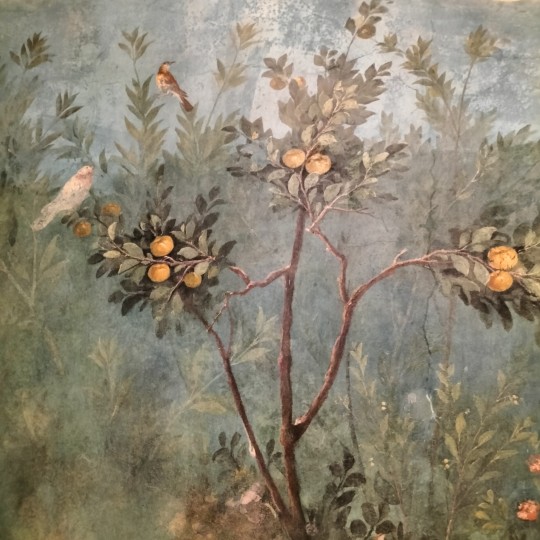
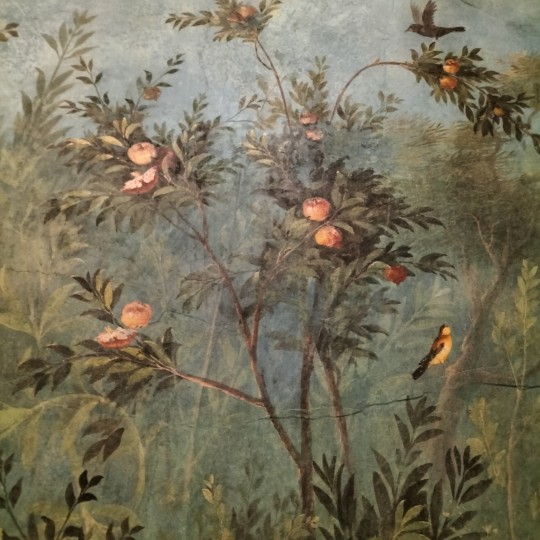


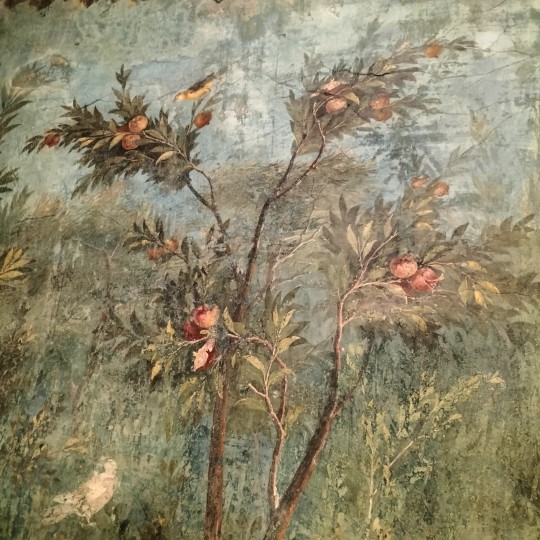
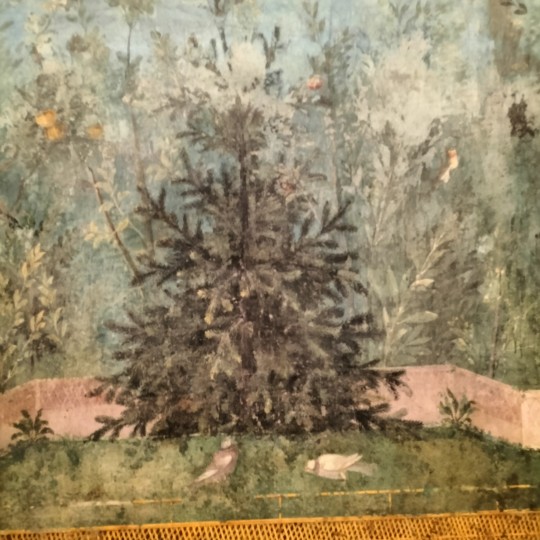

known as ad gallinas albas (of the white hen) because of pliny the elder's tale in his naturalis historia, recounting the myth of livia, newly bethroted to octavian augustus, having a white hen holding a laurel branch in its beak dropped into her lap by an eagle, interpreted as an omen of good fortune.
full view on tiktok
#archaeoblr#archaeology#roman archaeology#roman art#ancient rome#roman history#roman fresco#ancient art#villa of livia#villa di livia#octavian augustus#rome#roma#palazzo massimo#museum#roman museum#paiawon.txt#art history#historyblr#artblr#when in rome#studyblr#tagamemnon
822 notes
·
View notes
Text
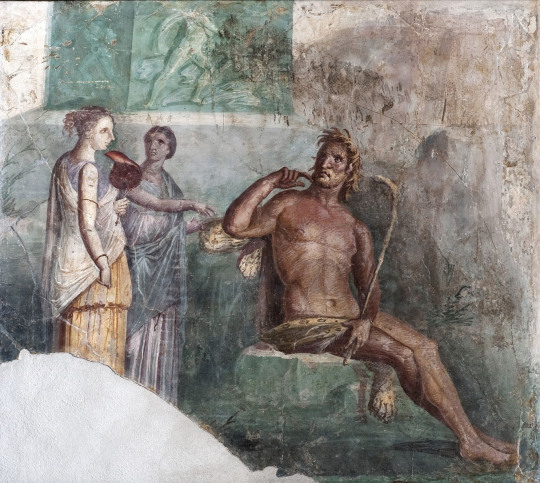
~ Polyphemus and Galatea: Fresco of the Fourth style from Pompeii or Herculaneum.
Date: A.D. 45-79
Provinience: Naples, National Archaeological Museum, Hall LXIX (Napoli, Museo archeologico nazionale, Sala LXIX); Pompeii, Archaeological Park, Herculaneum, Archaeological Park.
#ancient#ancient art#history#museum#archeology#ancient history#archaeology#Polyphemus and Galatea#Polyphemus#Galatea#fresco#pompeii#Herculaneum#a.d. 45#a.d. 79
551 notes
·
View notes